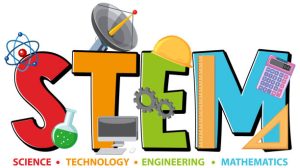 STEM (Science, Technology, Engineering, and Mathematics) education initiatives are instrumental in shaping the skills, knowledge, and mindset of the next generation of innovators and problem solvers. By encouraging exploration, critical thinking, and hands-on learning, STEM education prepares students to tackle real-world challenges and drive transformative change.
STEM (Science, Technology, Engineering, and Mathematics) education initiatives are instrumental in shaping the skills, knowledge, and mindset of the next generation of innovators and problem solvers. By encouraging exploration, critical thinking, and hands-on learning, STEM education prepares students to tackle real-world challenges and drive transformative change.
Significance of STEM Education Initiatives
1. Hands-On Learning and Experiential Education:
 Project-Based Learning: STEM education emphasizes hands-on, project-based learning experiences that enable students to apply theoretical concepts to real-world scenarios. Explore how project-based learning fosters creativity, collaboration, and problem-solving skills among students, laying the foundation for future innovation.
Project-Based Learning: STEM education emphasizes hands-on, project-based learning experiences that enable students to apply theoretical concepts to real-world scenarios. Explore how project-based learning fosters creativity, collaboration, and problem-solving skills among students, laying the foundation for future innovation.- STEM Labs and Workshops: STEM labs and workshops provide students with access to specialized equipment, technologies, and mentorship opportunities. Investigate the impact of hands-on experiences in STEM fields, igniting curiosity, and inspiring students to pursue careers in science, engineering, and technology.
2. Encouraging Diversity and Inclusivity:
- Equitable Access: STEM education initiatives strive to ensure equitable access to resources and opportunities for students from diverse backgrounds. Learn about programs aimed at reducing disparities in STEM participation, including outreach efforts, scholarships, and mentorship programs targeted at underrepresented groups.
- Promoting Gender Diversity: Addressing gender disparities in STEM fields is a priority for many education initiatives. Explore strategies to encourage girls’ participation in STEM subjects, challenge stereotypes, and create supportive learning environments that empower all students to pursue their interests and aspirations.
3. Partnerships and Collaboration:
- Industry Partnerships: Collaboration with industry partners provides students with exposure to real-world challenges, cutting-edge technologies, and career pathways in STEM fields. Discover how industry partnerships enrich STEM education initiatives through internships, guest lectures, and hands-on projects aligned with industry needs.
- Community Engagement: Engaging with the local community fosters connections between schools, businesses, and civic organizations, enriching the learning experiences of students. Learn about community-based STEM initiatives, outreach programs, and events that promote STEM awareness and enthusiasm among students of all ages.
4. Overcoming Challenges and Fostering Resilience:

- Resource Constraints: Limited resources and infrastructure can pose challenges for implementing effective STEM education initiatives, particularly in underserved communities. Explore strategies for overcoming resource constraints, leveraging technology, and cultivating innovative approaches to STEM learning.
- Teacher Training and Professional Development: Investing in teacher training and professional development is essential for delivering high-quality STEM education. Discover initiatives focused on equipping educators with the skills, knowledge, and pedagogical approaches needed to inspire and engage students in STEM subjects.
In conclusion, STEM education initiatives play a pivotal role in nurturing the next generation of innovators, problem solvers, and leaders. As educators, policymakers, and stakeholders continue to prioritize STEM education, they pave the way for a future where innovation and discovery propel society forward, shaping a brighter and more sustainable future for generations to come.






